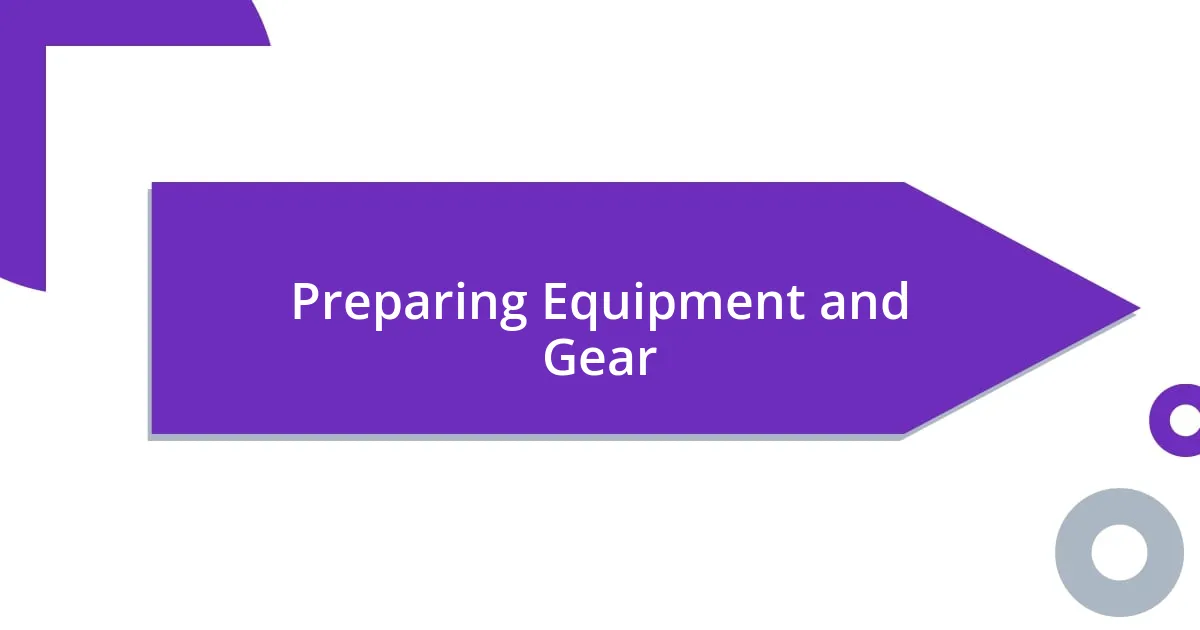Key takeaways:
- Understanding project goals is crucial for effective shoot planning, influencing creative decisions and logistics.
- Setting clear, specific, and flexible goals enhances collaboration and prepares the team for a focused outcome.
- A detailed shot list, including emotional beats and contingencies, is essential for capturing all key moments during the shoot.
- Effective coordination and communication with your team before and during the shoot can significantly streamline the process and promote adaptability in unexpected situations.

Understanding Shoot Planning Basics
When diving into shoot planning, I’ve learned that understanding the project’s goals is vital. Think about why you’re shooting and what story you want to tell. Isn’t it fascinating how having a clear purpose can shape every decision, from location to lighting?
One time, I was engrossed in planning a short film, and I realized how crucial it was to detail every element, from the script to the schedule. I remember noting how overwhelmed I felt at first—like standing before a blank canvas. But breaking it down piece by piece made it not only manageable but enjoyable. Have you ever felt that wave of anxiety wash over you only to find clarity in organization?
It’s essential to consider logistics as much as the creative side. I’ve had experiences where overlooking the simple details, like permits or equipment needs, turned into costly delays. Reflecting on those moments, I realized that prioritizing organization upfront could save so much creative energy later. How often do we underestimate the groundwork in favor of just capturing beautiful shots?

Setting Clear Goals for Shoots
Setting clear goals for a shoot makes the entire process so much smoother. I remember a time when I walked onto a set without fully defined objectives. I felt lost, like I was meandering through a maze. After that experience, I made it a point to write down my goals before any shoot—I consider it non-negotiable now. When everyone knows what we are aiming for, collaboration becomes effortless and focused.
Establishing these goals isn’t just about the end result; it fundamentally shapes how I prepare. For instance, when I set the goal of capturing emotion, I’ll prioritize lighting and angles that amplify feelings—such as warm tones for joy or stark contrasts for tension. The difference is palpable. Has anyone else experienced the magic that unfolds when intention guides creativity? It’s like flipping the switch on a well-designed plan that leads to a rich, unexpected outcome.
Lastly, goals should be specific yet flexible. Early in my career, I aimed for the broad objective of ‘making a good video,’ but it often left me feeling uninspired. Now, I focus on precise, measurable targets—such as “get three emotional expressions from each character.” This clarity not only fuels my motivation but also enhances the joy of shooting. I’m curious, have you found that certain goals resonate more deeply with your creative process?
| Goal Type | Description |
|---|---|
| Creative Goals | Focus on storytelling, atmosphere, and artistic expression. |
| Logistical Goals | Ensure all permits, equipment, and schedules are in place. |
| Measurable Goals | Specify quantifiable outcomes, like the number of shots or scenes. |

Creating a Detailed Shot List
Creating a detailed shot list is one of the most impactful steps in my shoot planning process. I often find myself jotting down not just the shots I intend to capture, but the emotional beats I want to hit. For instance, during a recent documentary, I made a point to list shots in a way that highlighted the subject’s journey—the triumphs, the struggles—ensuring I didn’t miss any pivotal moments. This approach resonated deeply with both me and the audience, as we were able to connect with the story on a personal level.
Here’s a practical breakdown of what to include in your shot list:
- Shot Number: Keep it sequential for easy reference.
- Shot Description: Write a detailed description of the shot, including angles and movements.
- Emotion/Intent: Showcase the emotional tone or intent behind the shot.
- Location: Specify where each shot will be taken to avoid confusion on set.
- Timing: Note the estimated duration for each shot to keep the shoot on track.
- Equipment Needed: List any specific gear required, ensuring proper preparation.
- Contingencies: Outline alternative shots in case of unforeseen circumstances or time constraints.
I learned this the hard way during a commercial shoot when we lost sunlight faster than expected. Having a backup plan in my shot list allowed us to quickly pivot and capture everything we needed, saving the day. Isn’t it remarkable how a few thoughtful details can turn a hectic shoot into a seamless creative experience?

Considering Location and Logistics
When it comes to considering location and logistics, there’s so much more beneath the surface than simply picking a spot. I vividly recall a time when I chose a stunning vineyard for a shoot, but overlooked the accessibility for our team and gear. It turned into a logistical nightmare with narrow roads and limited parking, making setup a nightmare. Ever had a similar experience? I learned that assessing the practicality of a location is just as crucial as its aesthetic appeal.
Logistics also include timing—what’s the best time of day for natural light? I always try to scout out locations in advance, ideally visiting at the same time we plan to shoot. This approach has saved me countless headaches. For example, during one project, the lighting was perfectly golden at sunset, capturing that magical ambiance. Rushing in without prior knowledge could have resulted in a completely different vibe. Planning ahead is essential; it’s where I find balance between spontaneity and structure.
Don’t forget about permits and permissions. Each location has its own regulations, and failing to secure necessary documentation can halt production in its tracks. One time, while shooting in a public park, we were approached by staff reminding us about our lack of permission. That swift reminder taught me the importance of diligent preparation. Have you ever faced a last-minute obstacle due to oversight? The lesson was clear: logistical foresight allows creativity to flow uninterrupted, making our artistic endeavors all the more fulfilling.

Preparing Equipment and Gear
Preparing gear for a shoot can be just as vital as planning the shots themselves. I’ve found that assembling equipment in advance helps minimize panic on the day of the shoot. For instance, before a recent project, I laid out each piece of gear on a table—a kind of ‘ready-to-go’ lineup. This simple act not only ensured that I had everything I needed, but it also gave me a moment to mentally run through the shoot and visualize how each item would come into play. What techniques do you use to keep your equipment organized?
One aspect I can’t emphasize enough is the importance of checking your gear before you pack it. There was that one time, amidst the excitement of a shoot, I discovered my main camera battery was missing just as we were about to start. The sinking feeling in my stomach served as a lesson on the necessity of thorough checks. Now, I do a checklist per gear category, whether it’s cameras, lenses, or lighting. This practice not only saves time but also helps me approach the shoot with confidence, knowing I won’t be scrambling for forgotten essentials.
Finally, consider the condition of your equipment. Whenever I prep for a shoot, I inspect everything for wear and tear, ensuring lenses are clean and filters are unsullied. There’s nothing worse than framing a perfect shot only to notice a smudge that ruins the moment. I always remember that one commercial shoot where I spent hours on setup only to find a pesky spot on my lens during the first take. Lesson learned: proactive maintenance can make all the difference in capturing those fleeting moments that are so often irreplaceable. Have you ever captured a breathtaking scene, only to find it marred by avoidable mistakes? Mistakes happen, but they shouldn’t define our creative potential.

Coordinating with Your Team
Working closely with your team can mean the difference between a smooth shoot and a chaotic mess. I remember one particular shoot where clear roles were established beforehand. The director focused on creative input, while the camera crew handled technical setup. This clarity not only minimized confusion but also allowed us to leverage each member’s strengths. Have you found that defining roles helps streamline your workflow?
Regular communication is key to successful coordination. For instance, I’ve had times where I made it a point to check in with each department before the shoot. Just last year, during a short documentary, I hosted a quick virtual meeting to discuss everyone’s ideas and concerns. I was surprised to see how much insight the sound technicians had on selecting locations based on acoustics. This collaboration created a sense of unity, making us all feel prepared and excited, and ultimately resulting in a production we were all proud of.
I’ve also learned that flexibility is essential. A few months ago, we encountered a sudden rainstorm on the day of a planned outdoor shoot. Instead of panicking, our team quickly brainstormed alternatives. We pivoted to an indoor location nearby that complemented our theme beautifully. This adaptability reminded me that sometimes the best moments come from unexpected changes. How do you approach situations when things don’t go according to plan? Embracing the unexpected can often lead to a more memorable shoot.














